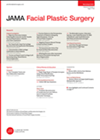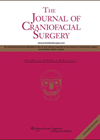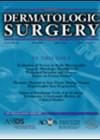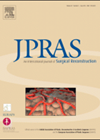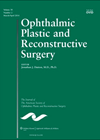
Journal Reviews archive for 2014
Simplification measure for costal cartilage grafting
The scalpel is currently the instrument used by most surgeons for carving costal cartilage grafts. However, this method is time consuming, requires a high degree of skill, and is far from ideal for reproducibly attaining uniform slices, even in expert...
The supraclavicular artery flap for head and neck reconstruction
Free tissue transfer has been manifested to be the primary reconstructive tool for major ablative defects of the head and neck. However, many patients are not good candidates for free tissue transfer because of their medical comorbidities or lack of...
Traumatic split earlobe repair using double triangular skin flaps
Split earlobes are a common secondary deformity of the ear. Numerous techniques have been described to repair a traumatic split earlobe and break the linear scar. However, most of the techniques require elevation of additional flaps from normal surrounding tissue...
Repair of the supernumerary nostril
The supernumerary nostril is a rare challenge, first reported by Lindsay in 1906. It has been suggested that they may develop from an accessory nasal pit or from a fissure in the lateral nasal process to create a double nostril....
A conservative approach to treat ameloblastoma
Ameloblastoma is a relatively rare odontogenic tumour that is benign but locally aggressive. Additionally they tend to recur locally. These are rare accounting for 1% of oral tumours and occur almost exclusively in the jaws. It is more common in...
Reconstruction after parotid surgery
This is a retrospective study from Naples, Italy. The authors analyse and compare patients that had benign parotid disease that were reconstructed with three different techniques. Between February 2002 and March 2009, 224 patients were included; these patients had either...
Stretch mark treatment comparison
This article shows a comparison between two simple methods of treatment which are currently widely used in the aesthetics industry to treat early striae distensae. With the increasing demand from patients to achieve an improvement in stretch marks, the drive...
The benefits of intense pulsed light
The authors of this paper have conducted a systematic review of the treatment of intense pulsed light (IPL) to treat a number of dermatological conditions. By reviewing existing literature, they intended to establish evidence to support physicians so IPL could...
Nasolabial flap to reconstruct peri orbital defects
The authors present a series of 25, mainly geriatric, patients that had ablative surgery and had complex defects in the paranasal and orbital regions. The paranasal and periorbital regions are extremely important for facial aesthetics and quality of life. These...
The many uses of human amnion
Human amnion has been the focus of myth and superstition. To be born with the ‘caul’ intact was considered lucky and this was transferable, including legitimate selling e.g. caul amulets. In 1910 foetal membranes were first used for transplantation and...
Success rates of primary and revision transcanalicular DCR surgery
Transcanalicular laser dacro cysto rhinostomy (DCR) is a relatively rare procedure compared to more conventional external or endonasal techniques. In this article the authors examine the outcomes of revision surgery following failed transcanalicular diode laser DCR (TCDL DCR), comparing a...
Assessing the quality of scars from incisions made by a Colorado needle or a scalpel
Traditional teaching has held the best scars are achieved with cold steel although no previous study has formally investigated this hypothesis in oculoplastic surgery. This paper describes a non-randomised cross-sectional study comparing the scar quality achieved from cold steel with...

